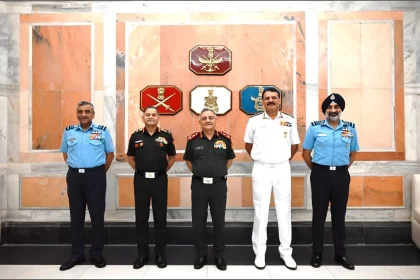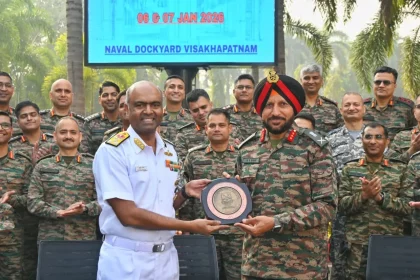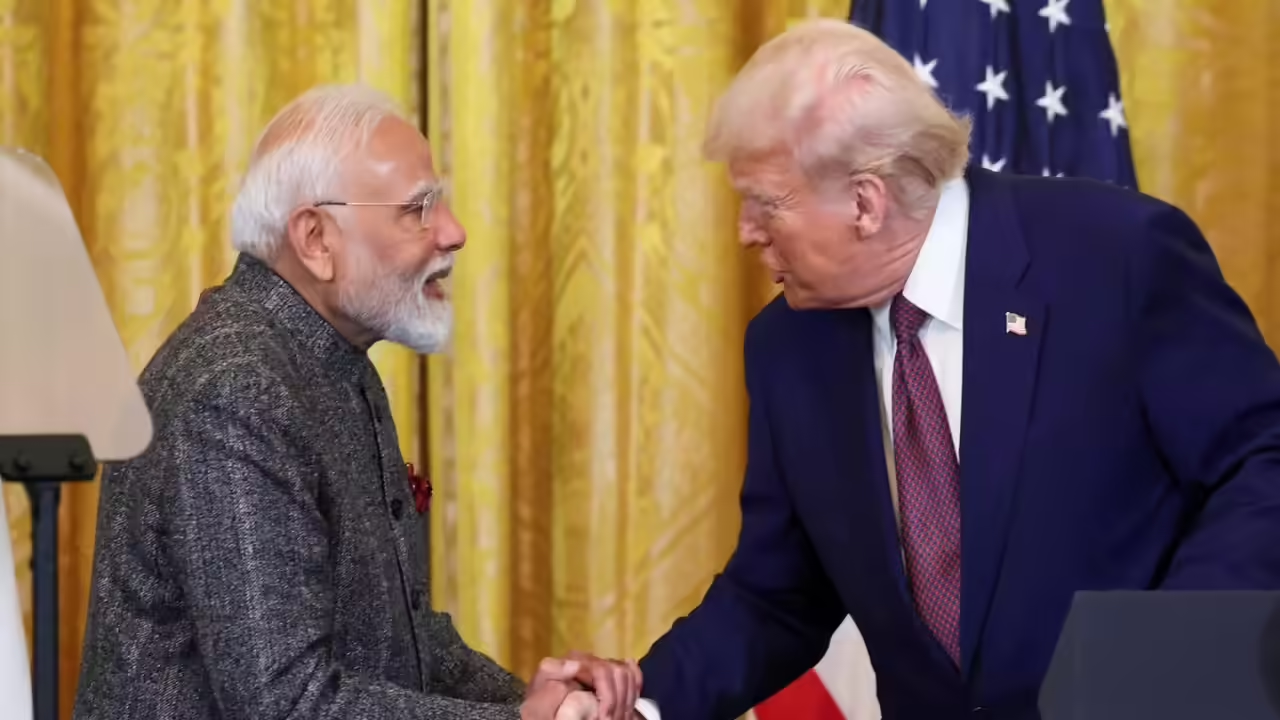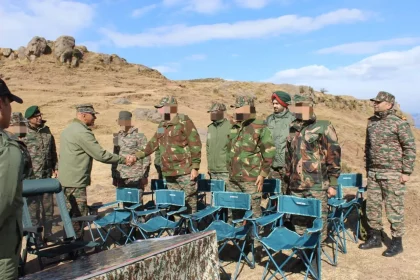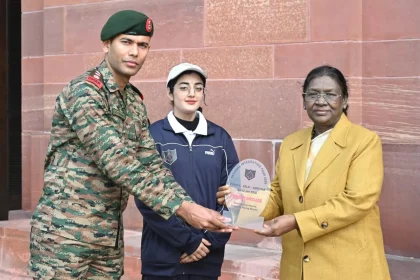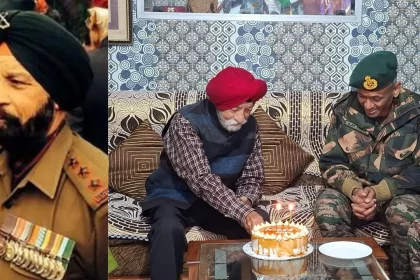Chiefs of Staff Committee Releases Vision Document on Training Methodology for Indian Armed Forces
Tri-service roadmap to develop future-ready leaders and enable joint, multi-domain operations.
Officers of Higher Command Course-54 Visit Eastern Naval Command to Enhance Jointness and Integration
HCC-54 officers gain first-hand exposure to naval operations, strengthening tri-service cooperation and operational synergy.
Trump Says PM Modi ‘Not That Happy’ Over US Tariffs, Claims India Waiting for Apache Helicopters
US President cites tariffs over Russian oil trade, references defence delays while affirming ties with Indian Prime Minister.
Lt Gen Pratik Sharma Reviews Counter-Terrorism Grid and Operational Preparedness at Basantgarh
Army Commander Northern Command assesses security posture, lauds troops for steadfast commitment to peace and stability.
National Integration Tour: Degree College Poonch Students Visit Rashtrapati Bhavan and Key National Institutions
Indian Army-led National Integration Tour deepens youth engagement with India’s heritage, leadership, and democratic values in New Delhi.
Tiger Division Extends Birthday Greetings to Param Vir Chakra Awardee Bana Singh in Jammu
Tiger Division honours Param Vir Chakra awardee Bana Singh on his 77th birthday, celebrating his legendary bravery at Siachen.

